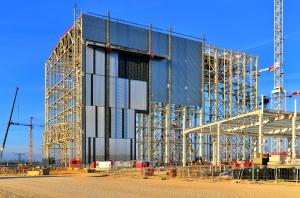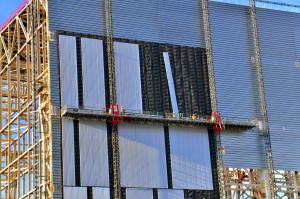Dressing the steel skeleton
Watching the progression of cladding on the Assembly Hall building is like seeing an architect's drawing become reality. The mirror-like stainless steel surfaces already cover close to one-third of the east facade of the edifice and the impression is, as the architect intended, one of cleanliness and precision.
All in all, some 14,000 m² of surface needs to be covered. When the work is done, we'll know if the building holds true to the architect's promise of reflecting the ever-changing shades of skylight and seasons.



